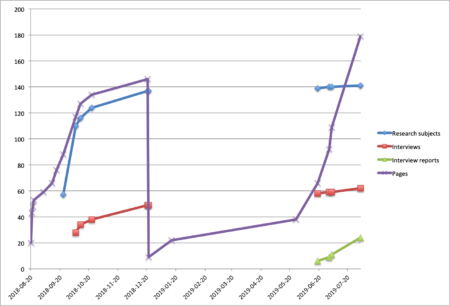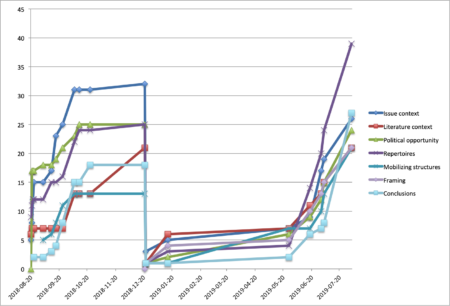I have all of my data analysis done and printed in a thick binder sorted by subject matter.
With a 58 page bibliography, I feel like I am a good way through the literature review, though my room and computer are still well populated with a set of things which I have read and annotated but still need to be incorporated into the manuscript, as well as a much smaller number that still need to be read.
I have a 98,000 word manuscript, not counting the bibliography, but it has been written in thousands of little sessions and surely needs a fair measure of editing to make it all clear, non-redundant, and smooth-flowing.
Perhaps the following makes sense as a path to completion:
- Finish incorporating all paper and digital sources into the manuscript
- Complete a read-through and first electronic edit of the entire draft, making note of places where evidence from the interviews would provide useful substantiation
- Read through the empirical package, adding relevant quotes and references to the manuscript
- Print off and hand-edit the manuscript to the point where I think it is completely ready to go to the dissertation committee for their substantive contents


